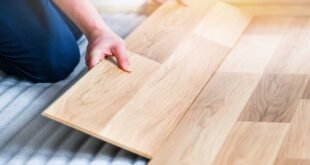Floor tiling, a time-honored practice, has gained immense popularity in both residential and commercial settings due to its myriad of benefits. Known for its durability, aesthetic appeal, and versatility, floor tiling transforms spaces, providing a blend of functionality and beauty that few other flooring options can match.
The origins of floor tiling date back thousands of years, with ancient civilizations such as the Egyptians and Romans utilizing tile to create intricate and durable surfaces. These early examples were often made from natural materials like stone and clay, setting a precedent for the variety we see today.
In contemporary settings, floor tiles come in a diverse range of materials, each with unique characteristics. Ceramic tiles are a popular choice for their affordability and ease of maintenance. They are made from natural clay, which is hardened by heat, and then glazed to create a resistant, low-porosity surface.
Porcelain tiles, a subtype of ceramic, offer superior durability and an even lower water absorption rate, making them ideal for high-traffic areas and places exposed to moisture, such as bathrooms and kitchens. Their dense composition and strength also provide resistance to scratches and stains.
Natural stone tiles, such as marble, granite, and slate, bring an element of luxury and uniqueness to spaces. Each stone tile is a piece of nature’s art, with patterns and shades that vary from tile to tile. While generally more expensive and requiring more maintenance, they offer unparalleled beauty and longevity.
The versatility of floor tiling extends beyond residential applications. In commercial environments, tiles are favored for their resilience under heavy use, ease of cleaning, and the wide range of design possibilities they offer. Whether in a trendy restaurant, a busy office, or a serene home, floor tiles can be tailored to suit any aesthetic or functional need.
As we delve deeper into the specifics of floor tiling in this guide, it’s clear that its enduring popularity is no mere trend but a testament to its enduring practicality and timeless appeal.
Essential Tools and Materials
Embarking on a floor tiling project requires a thorough understanding of the essential tools and materials to ensure a smooth and efficient process. Let’s delve into what a beginner needs to get started.
Tiles: The cornerstone of any tiling project, tiles come in various materials, sizes, and finishes. Ceramic and porcelain are popular choices due to their durability. When selecting tiles, consider the room’s size and the tile’s slip-resistance rating.

Tile spacers: These small, plastic pieces help maintain uniform gaps between tiles, ensuring a consistent grout line. Opt for high-quality spacers that fit snugly and are easy to remove once the adhesive sets.
Tile adhesive: Also known as thin-set mortar, tile adhesive secures the tiles to the substrate. It comes in pre-mixed or powdered forms. Ensure you choose an adhesive suitable for your particular tile and surface type.
Grout: Used to fill the spaces between tiles, grout comes in a variety of colors. Choose a grout that complements your tile choice and is designed for the intended use area (e.g., water-resistant grout for bathrooms).
Sealing products: Post-grouting, sealers protect both the tiles and grout, especially for porous materials like natural stone. They guard against stains and moisture, prolonging the lifespan of your tiling work.
Now, onto the necessary tools:
Tile cutters: Whether manual tile cutters or electric wet saws, these tools are vital for cutting tiles to fit around edges and corners. Choose one based on the tile material and project scale.
Trowels: Notched trowels are essential for applying tile adhesive evenly. The size and shape of the notches will depend on the tile size.
Sponges: Large, absorbent sponges are used for cleaning off excess grout from tile surfaces. Soft, fine-pore sponges ensure a smooth finish without scratching the tiles.
Levels: A level ensures that your tiles are laid flat and even, preventing an uneven floor. A laser level can be particularly useful for larger areas.
Safety equipment is crucial in any DIY project.
Protective gloves guard against sharp edges and harsh chemicals, while safety goggles protect your eyes from flying debris. Knee pads are advisable for prolonged kneeling, reducing strain and discomfort.
Selecting quality tools and materials is paramount. Opt for reputable brands and products backed by positive reviews. Investing in high-quality items ensures not only a better-finished product but also a more efficient and safer tiling process.

Next, layout planning is imperative. Draft a layout by measuring the floor dimensions and marking the center. From this midpoint, either draw chalk lines or use laser guides to ensure symmetrical tile placement. This not only prevents future alignment issues but also enhances the aesthetic appeal of your floor.
Once the layout is finalized, apply the adhesive. Using a notched trowel, spread the adhesive uniformly on a small section of the floor, usually an area where you can comfortably work within 30-45 minutes. Hold the trowel at a 45-degree angle to ensure even distribution.
Begin placing the tiles from the center lines you marked earlier. Press each tile firmly into the adhesive and use spacers between them to maintain consistent gaps. This uniform spacing is critical for neat grouting later. Regularly check for level using a spirit level and adjust as needed to avoid uneven surfaces.
For edges and corners, tiles often need cutting. Use a tile cutter for straight cuts or a tile nipper for more intricate shapes. Precision here ensures a snug fit along walls and fixtures, lending a professional finish to the tiling process.
After all tiles are set and the adhesive has cured (usually within 24 hours), move on to grouting. Spread the grout using a grout float, pressing it into the spaces between tiles. Wipe excess grout away with a damp sponge and let it cure as per the manufacturer’s instructions. Finally, after the grout is set, it is essential to seal both the tiles and grout to protect against moisture and stains.
Common issues such as tiles shifting or adhesive drying too quickly can be managed by working methodically and understanding the properties of the materials used. By following these steps, you ensure a durable and visually pleasing tiled floor.
Maintenance and Care Tips
Proper maintenance and care are crucial for ensuring the longevity and aesthetic appeal of your tiled floor. Regular cleaning practices are the foundation of this maintenance. For daily cleaning, it is advisable to use a soft broom or a vacuum cleaner with a brush attachment to remove dirt and debris. Weekly mopping with a mild, pH-neutral tile cleaner will help maintain the floor’s shine and cleanliness without causing damage.
When choosing cleaning products, avoid harsh chemicals or abrasive tools, as they can damage the surface of the tiles and grout. Instead, opt for gentle cleaning solutions specifically designed for tiled surfaces. For natural stone tiles, it’s important to use cleaners made for that material to prevent etching or staining.
Handling spills and stains promptly is essential to prevent long-term damage. For liquid spills, use a soft cloth or paper towel to blot up the spill immediately. Avoid rubbing, as this can spread the stain. For more stubborn stains, a mixture of baking soda and water can be effective. Apply the paste to the stain and let it sit before gently scrubbing and rinsing.
Routine maintenance tasks include resealing grout lines, which should be done every six months to a year, depending on the foot traffic. Sealing the grout helps to prevent water absorption and staining. Regularly inspect the tiles and grout for any signs of damage or wear. Minor repairs, such as replacing a broken tile or re-grouting small sections, can usually be handled as a DIY project using appropriate tools and materials. However, more extensive damage may require the expertise of a professional to ensure a seamless repair.
By adhering to these maintenance and care tips, you can keep your tiled floor looking its best and enduring its lifespan. Proper upkeep not only preserves the aesthetic quality of your flooring but also minimizes the need for costly repairs and replacements.
This content was generated by our experts with the help of AI.
 ClassHome.CO.UK Class Home UK General Home Repairs & Management
ClassHome.CO.UK Class Home UK General Home Repairs & Management



